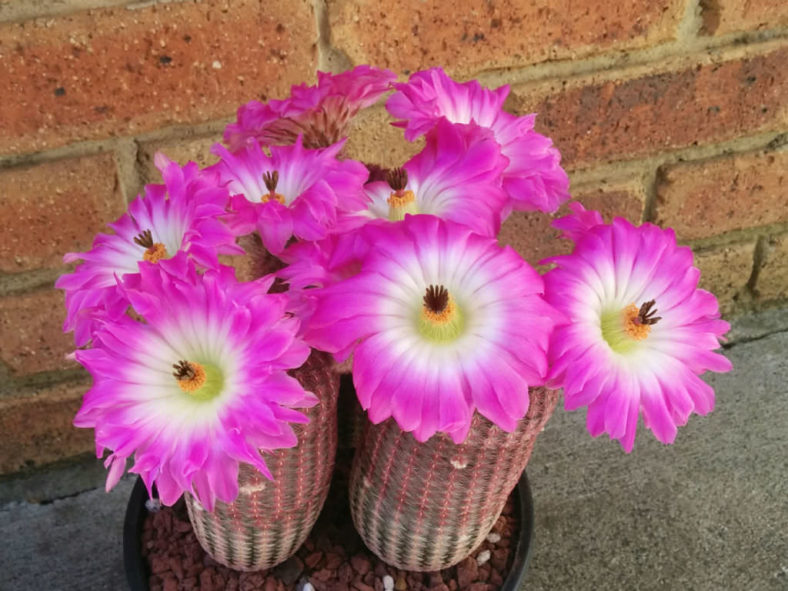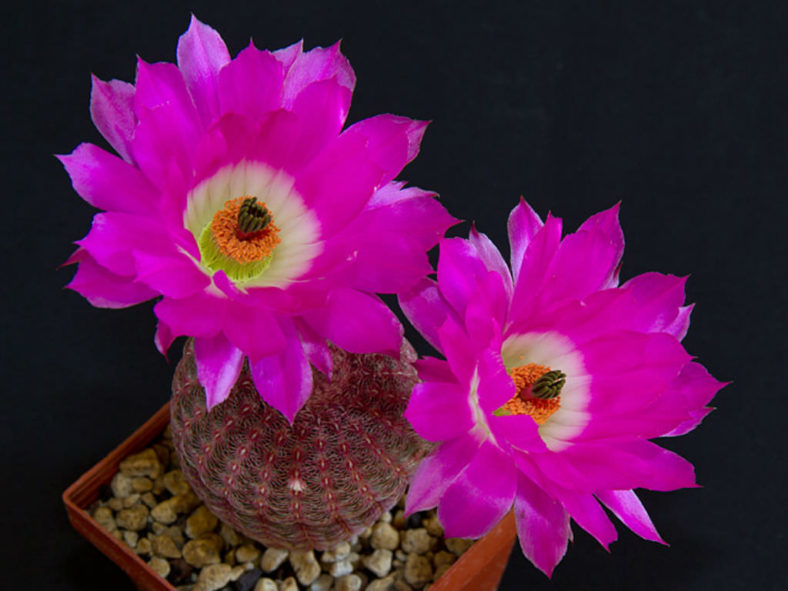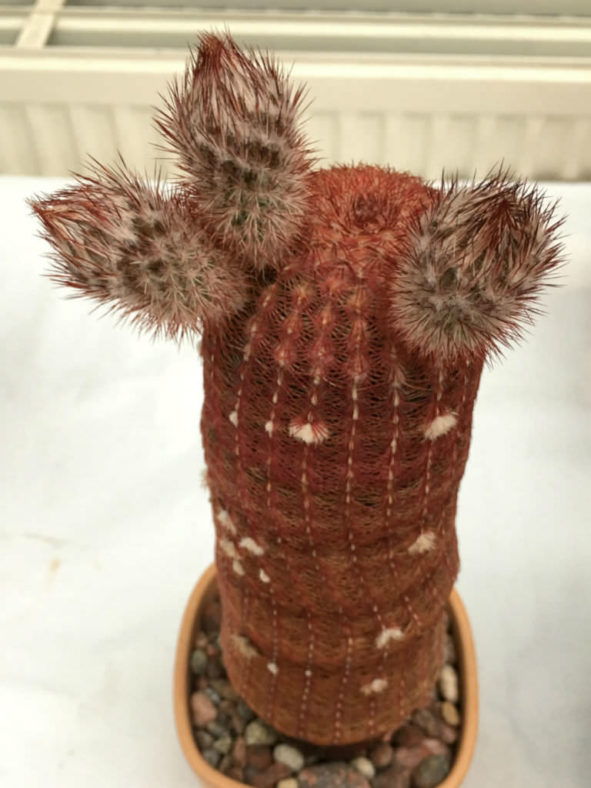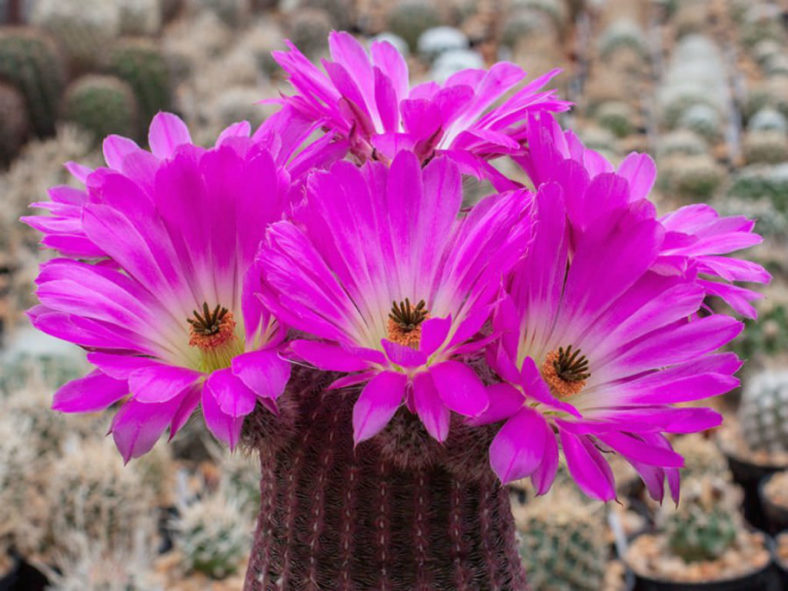Scientific Name
Echinocereus rigidissimus subsp. rubispinus (G.Frank & A.B.Lau) N.P.Taylor
Common Name(s)
Pink Comb Cactus, Rainbow Cactus, Ruby Rainbow
Synonym(s)
Echinocereus pectinatus var. rubispinus, Echinocereus pectinatus var. rubrispinus, Echinocereus rigidissimus var. rubispinus, Echinocereus rigidissimus var. rubrispinus
Scientific Classification
Family: Cactaceae
Subfamily: Cactoideae
Tribe: Pachycereeae
Genus: Echinocereus
Origin
Echinocereus rigidissimus subsp. rubispinus is native to Mexico.
Etymology
The subspecific epithet "rubispinus" (pronounced "roo-bih-SPIN-us") means "red-spined, having red spines" and refers to the ruby-red spines of the stems of this subspecies.
Description
Echinocereus rigidissimus subsp. rubispinus is a small, columnar cactus with erect, cylindrical stems densely covered with ruby-red spines. The stems can grow up to 10 inches (25 cm) tall and 3 inches (7.5 cm) in diameter.
The flowers are pinkish-red, magenta, or red, with white throats. They can reach 4 inches (10 cm) in diameter and appear near the top of the stem in late spring and summer.

Forms of Echinocereus rigidissimus subsp. rubispinus
How to Grow and Care for Echinocereus rigidissimus subsp. rubispinus
Hardiness: USDA hardiness zones 9a to 11b: from 20°F (-6.7°C) to 50°F (10°C).
If you have successfully grown other globular cacti, you will likely have success with Echinocereus. One of the key success factors is avoiding any hint of wet soil. Because of their shallow root systems, these cacti are particularly susceptible to root rot, which can ultimately kill them.
Echinocereus generally thrives in intense bright light, requires minimal watering, and benefits from a light fertilizer application. However, they are vulnerable to pests such as mealybugs and aphids.
These cacti grow slowly and typically need to be repotted only every other year. You can extend the time between repotting by removing offsets and potting them in their own pots. When repotting, carefully remove the cactus from its pot and clear away any clumped soil. Since Echinocereus have shallow roots and weak root systems, be cautious not to damage the roots during the process.
Learn more at How to Grow and Care for Echinocereus.
Links
- Back to genus Echinocereus
- Succupedia: Browse succulents by Scientific Name, Common Name, Genus, Family, USDA Hardiness Zone, Origin, or cacti by Genus
Photo Gallery
Click on a photo to see a larger version.


